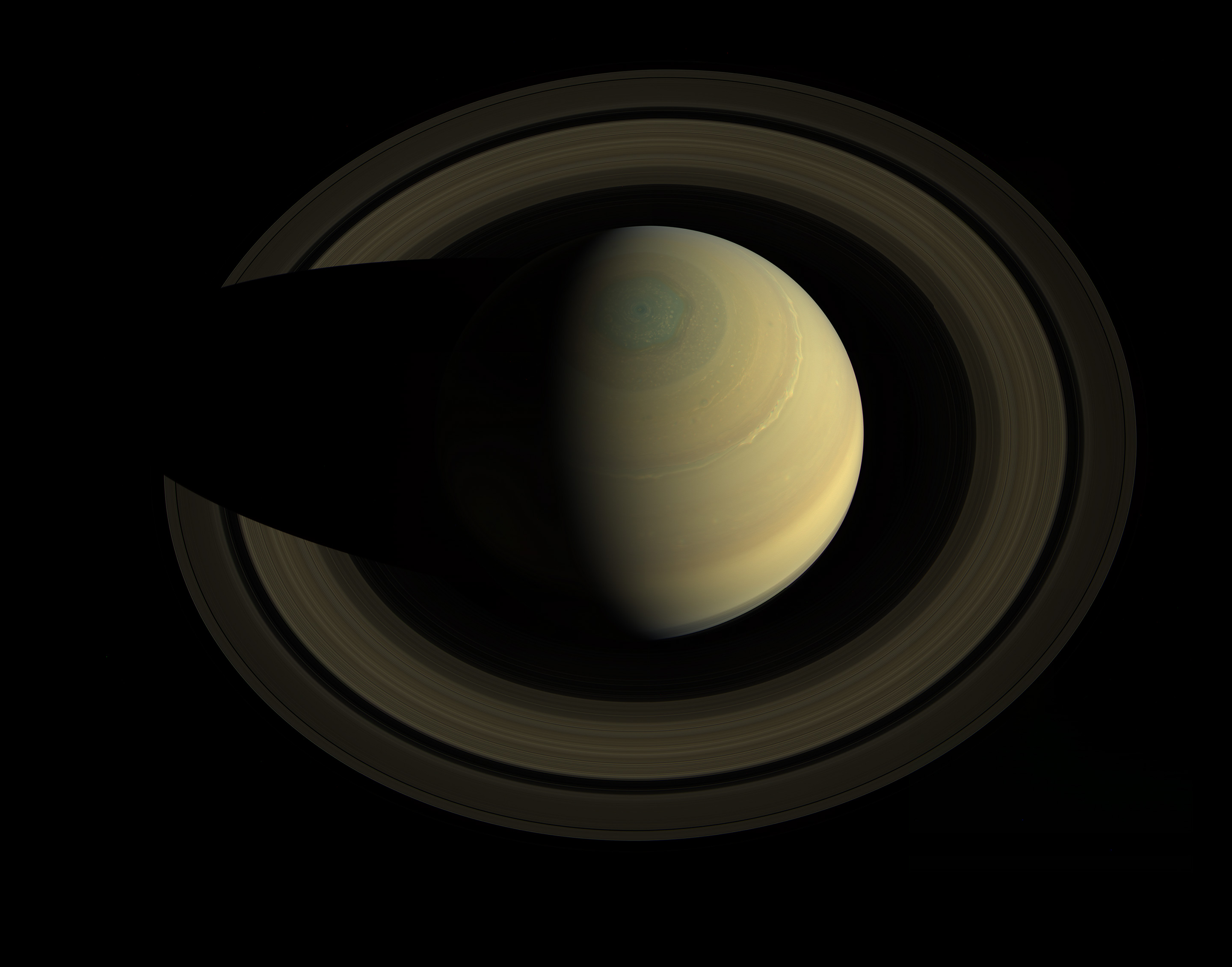
It’s a view as good as gold. A loop high above Saturn by NASA’s Cassini spacecraft revealed this stately view of the golden-hued planet and its main rings. The observation and resulting image mosaic were planned as one of three images for Cassini’s 2013 Scientist for a Day essay contest. The contest challenges students to study three possible targets and write about which one they think will yield the best science. Today is the last day for U.S. submissions and the Cassini mission has already started working on picking the best essays.
This natural-color view – seen as human eyes would have seen it – was obtained on Oct. 10, 2013. It shows off the differently colored bands of weather at Saturn. A bright, wavy stream of clouds around 42 degrees north latitude appears to mark some of the turbulent aftermath of a giant storm that reached its violent peak in early 2011. The mysterious six-sided weather pattern known as the hexagon is also visible around Saturn’s north pole.
When Cassini arrived in 2004, more of the northern hemisphere sported a bluish hue and it was northern winter. The golden tones dominated the southern hemisphere, where it was southern summer. But as the seasons have turned and northern summer has begun, the colors have begun to change in each hemisphere as well. Golden tones have started to dominate in the northern hemisphere and the bluish color in the north is now confined to a tighter circle around the north pole.
Cassini is currently in a special set of tilted orbits known as “inclined orbits” that allow the spacecraft to swing up over the north pole and below the south pole. Cassini was tilted as much as 62 degrees from the plane of Saturn’s equator in April of this year and will continue to work its way back down again till early 2015. Much of Cassini’s tour has involved orbits around the equatorial plane, where most of Saturn’s rings and moons are located.
The Cassini-Huygens mission is a cooperative project of NASA, the European Space Agency and the Italian Space Agency. JPL, a division of the California Institute of Technology, Pasadena, manages the Cassini-Huygens mission for NASA’s Science Mission Directorate in Washington. The Cassini orbiter and its two onboard cameras were designed, developed and assembled at JPL. The imaging team consists of scientists from the United States, the United Kingdom, France and Germany. The imaging operations center is based at the Space Science Institute in Boulder, Colo.
For more information about Cassini and its mission, visit: www.nasa.gov/mission_pages/cassini/main/index.html and http://saturn.jpl.nasa.gov.



